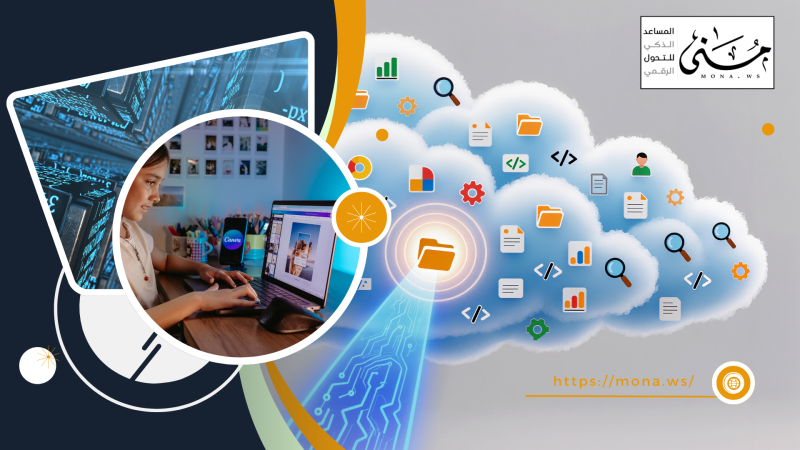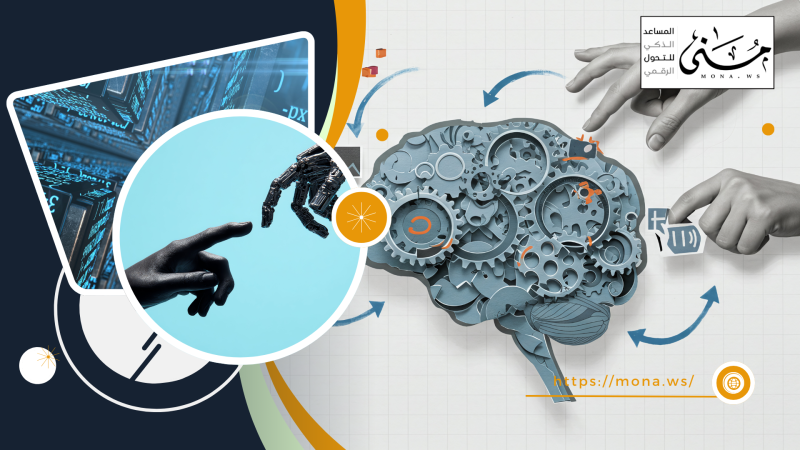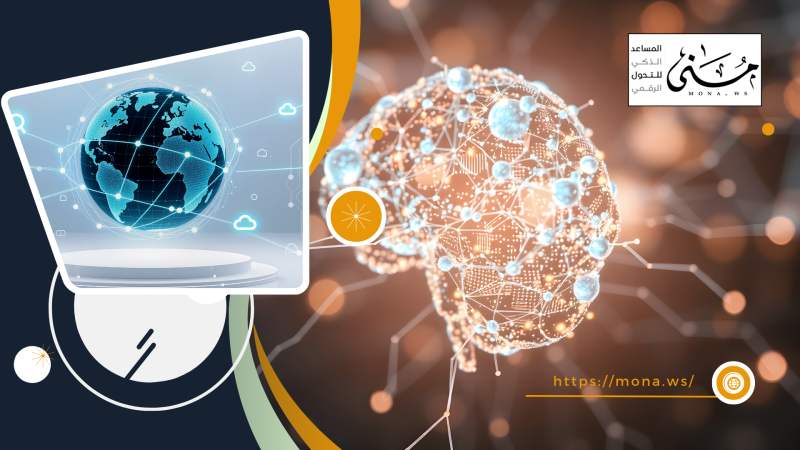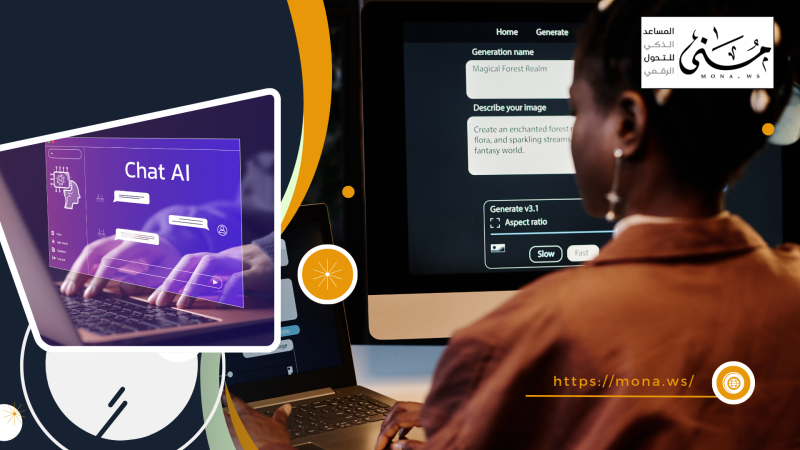With the significant increase in the volume of digital information and its importance in the modern digital world, the main challenge has become protecting this information and ensuring its integrity. In this context, blockchain technology offers an innovative solution capable of enhancing the security of electronic archiving thanks to its decentralized structure and advanced encryption and transparency features.
Continue reading the article to learn more information.
What is blockchain technology?
Blockchain technology is known as an innovative digital system that records data in the form of chains of connected blocks, where each block is secured with a unique cryptographic code known as a “hash” (Hash).
Data is distributed across a decentralized network of nodes that work together to verify transactions, making it almost impossible to tamper with or modify the data. The main mechanism of blockchain is to record every change or modification made to the data as a new record without compromising the original copies.
This enables accurate tracking of processes, and gives electronic archiving unprecedented reliability. Through this technology, digital documents become protected against any unauthorized modification, which enhances security in environments that require a high degree of trust, such as government institutions and banks.
Blockchain Technology Elements
Blockchain technology relies on a unique structure that ensures the security and speed of transactions, thanks to the basic elements that make up the fabric of this technology. The following is an explanation of these elements:
The mass (Block)
A block represents the basic building block of a chain, containing a set of operations or tasks that are performed within the system, such as transferring funds or recording data. The block is defined by a certain amount of operations to ensure operational efficiency and prevent manipulation or the introduction of fake transactions.
Information (Information)
These are the commands or data that are recorded within the block, and represent part of the operations that make up the block as a whole.
HashtagHash)
Similar to the DNA of a chain, it is a digital signature generated through specific algorithms. A hash ensures the security and integrity of transactions.
Time stamp (Timestamp
It records the time of each transaction to ensure transparency and accurate tracking of any change in the chain.
Benefits of Blockchain Technology for Electronic Archiving
It has become necessary to integrate blockchain technologies to improve the performance of institutions, as it offers several benefits, including:
Ensure safety and reliability:Blockchain technology is able to create records that cannot be changed or deleted, making it ideal for protecting sensitive documents.
Promote transparency:By providing a unified record that all parties can view, trust among users is enhanced.
Efficiency and cost reduction:Blockchain provides an intermediary-free environment, reducing the time and cost associated with data management and verification.
Environmental sustainability:Reduce reliance on paper documents.
Alignment with Vision 2030:Supporting organizations to digitally transform in line with the Sustainable Development Goals.
Blockchain technology is not just a technology tool, it is a comprehensive transformation in how data is managed and protected. By adopting this technology, organizations can enhance the security of their digital archives, improve operational efficiency, and comply with modern requirements related to digital transformation.
What are the types of blockchain?
Blockchain technology varies according to the purpose of its use and the method of accessing the data recorded in it. These types provide different solutions that suit multiple needs. The most important types are the following:
Public blockchain (Public)
Anyone can participate in the public network, where all data is transparently available to everyone, ideal for open projects like cryptocurrencies.
Private blockchain (Private)
Sharing is limited to specific individuals within an organization, ensuring that data is protected and used for internal purposes only.
Collaborative blockchain (Consortium)
Allows a select number of organizations to collaborate through a shared network, such as partnerships between banks or large corporations.
Permissioned and Permissionless Blockchain
Licensed: It is intended for authorized users only, such as governments.
Unlicensed: It allows open participation for everyone with the requirement to prove the validity of the operations.
Blockchain Technology Applications
With the development of blockchain technology, its applications have come to include diverse fields that go beyond finance to reach non-traditional industries, such as library management and the Internet of Things. Its applications include:
Financial applications
Bitcoin (Bitcoin)
The first and most popular cryptocurrency that relies on a public ledger to execute transactions across a peer-to-peer network.
Ripple (Ripple):
A system specialized in currency transfer and settlements between banks via a decentralized network.
Non-financial applications:
Ethereum (Ethereum):
A platform that allows the creation of self-running smart contracts across a Turing-complete blockchain.
Hyperledger (Hyperledger):
An open source project to develop blockchain solutions for businesses, such as supply chains and technology industries.
The impact of blockchain in enterprise management
Blockchain technology is not limited to the financial industry, but its effects have begun to appear in new areas such as library and institution management, providing decentralized solutions to improve services, such as:
Building Metadata Systems
Blockchain helps develop decentralized databases to solve centralized cataloging problems, enhancing accurate tracking of library materials.
Digital Sales Rights Protection
This technology enables authors to control the sale and lending of e-books in a secure and transparent manner.
Future Library Management
Libraries will become decentralized, with patron records and transactions stored on a blockchain, promoting transparency and self-governance.
Partnership across organizations
Collaborative blockchains allow libraries and institutions to share resources and data within secure, closed networks.

The most important statistics about blockchain technology
Blockchain technology is witnessing rapid development in various sectors, which has led to the emergence of amazing statistics that highlight its great impact. In this section, we review some numbers and statistics that illustrate the spread of this technology and its global impact:
Growth in market size
The global blockchain technology market size is expected to reach $67.4 billion by 2026, growing at a CAGR of over 68%.
In the Middle East alone, investments in blockchain projects have exceeded $1.2 billion in recent years.
Businesses using blockchain technology
According to a study by Deloitte, 83% of major global companies see blockchain as a strategic priority.
More than 60% of tech startups are directly dependent on blockchain applications.
Cryptocurrencies
The number of blockchain-based cryptocurrencies has reached more than 23,000, with a total market cap of more than $1 trillion.
Bitcoin alone is responsible for over 40% of the cryptocurrency market cap.
Applications in different sectors
In the finance sector, 73% of financial institutions are using blockchain solutions to improve transparency and security.
In the supply chain, process times have been reduced by up to 34% thanks to blockchain applications.
These statistics reflect the significant impact that blockchain technology has had on the global stage, and highlight the growth opportunities that still lie ahead for this field.

Global systems based on the marriage of blockchain and governance
There are many systems that manage blockchain effectively. These systems are not limited to managing cryptocurrencies only, but also include tools for managing documents and complex business processes.
IBM Blockchain
IBM Blockchain is an open source technology platform that enables organizations to manage their own blockchain networks, and is widely used in the financial and supply chain industries.
- It provides a customizable platform for managing blockchain-based networks and applications, allowing organizations to define databases and monitoring tools.
- It features smart contract technology that allows transactions to be executed automatically once the specified conditions are met.
Hyperledger Fabric
Hyperledger Fabric is an open source framework from the Linux Foundation used to build private blockchain networks for enterprises. It is mainly used in commercial and industrial solutions.
- It provides great flexibility in designing private networks using blockchain technologies.
- It allows fine-grained control over data access, as permissions can be defined based on advanced rules related to identity and authentication.
Oracle Blockchain Cloud Service
Oracle Blockchain Cloud Service is a blockchain-based cloud solution that enables organizations to easily build their own blockchain networks.
- The system provides powerful tools to build logistics supply chains that track products in real time across secure and reliable networks.
- It integrates with other resource management systems, such as Oracle ERP, to improve data accuracy and speed of business transactions.
DocSuite
DocSuite is an intelligent document management system that helps in moving from paper management to electronic management. DocSuite uses modern technologies such as artificial intelligence and process automation. With the addition of blockchain technology, document storage and security has become more reliable and transparent.
- AllowsDocSuite tracks all document changes and movements using an immutable blockchain-based ledger, preventing tampering and facilitating administrative auditing.
- Approvals and transactions within the system can be automated by integrating smart contracts, saving time and effort in processing documents and decisions.
- Users can integrate the system with different systems to speed up processes and achieve high levels of transparency and security.
- Improves cybersecurity by encrypting data using blockchain technology, ensuring the integrity of documents from tampering or unauthorized access.
- It is integrated with various business and process management systems, enhancing efficiency and helping facilitate distributed transactions between companies.
Microsoft Azure Blockchain
Microsoft Azure Blockchain is a cloud platform that helps businesses build and manage secure blockchain networks using flexible, cloud-powered tools.
- It supports multi-stakeholder networks across a single blockchain, helping businesses automate operations and reduce costs.
- It can be integrated with other cloud systems to manage business processes and provide seamless solutions to enterprises.
- Enhances security through encryption and transaction monitoring.
SAP Leonardo Blockchain
SAP Leonardo Blockchain is part of the SAP Leonardo platform that integrates blockchain technologies with other business solutions to manage business and operations.
- SAP Leonardo is used to optimize commercial supply chains and provide integrated reporting on products and services.
- It helps in tracking products via blockchain, which enhances customer and consumer confidence.
- It provides advanced data analytics techniques that can leverage data stored across blockchain to improve strategic decision making.
VeChain
VeChain is a blockchain system dedicated to supply chain management, used in sectors such as automotive, food, and retail.
- VeChain uses blockchain technology to provide accurate and transparent information about products across the supply chain through digital tokens.
- It can be integrated with supply chain management systems to enhance transparency and reduce the risks associated with corruption and manipulation.
- It helps confirm the authenticity and source of products, allowing consumers to trace the history of the product from its inception until it reaches them.
Blockchain-powered systems such as IBM Blockchain, Hyperledger Fabric, and Oracle Blockchain offer powerful solutions for businesses to integrate blockchain technologies into their daily operations. DocSuite differs from these systems in that it focuses specifically on document management and administrative transactions, while integrating blockchain to provide greater security and efficiency in transactions.
Blockchain technology is not just a technical tool, it is a new model for managing operations and exchanging information securely and transparently. As its applications spread, the world will witness radical changes in the way transactions are managed. It is an upcoming digital revolution that makes data more secure and decentralized.
 تأثير البلوك تشين في إدارة المؤسسات
تأثير البلوك تشين في إدارة المؤسسات





Comments
Add New Comment